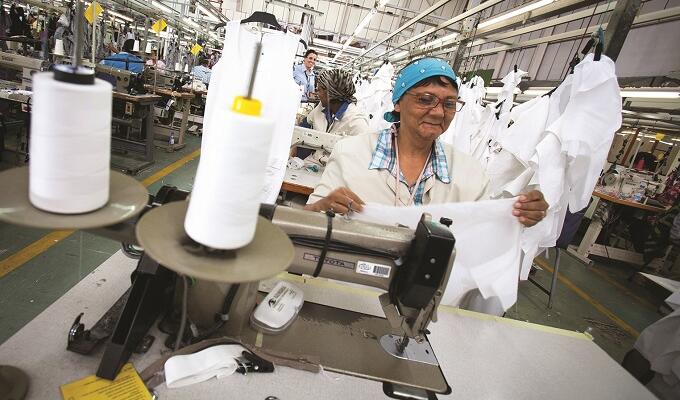

Three trade priorities for global development in 2016
the international community has to step up
on trade and development in 2016
Much was at stake in 2015 regarding global trade and development, and the international community delivered only partially. It can only be hoped that 2016 will bring more concrete and identifiable results.
The Addis Ababa Action Agenda, agreed at the Third International Conference on Financing for Development in July 2015 acknowledged trade ‘as an engine for development’.
It also argued that Aid for Trade ‘can play a major role,’ particularly in least developed countries (LDCs). ‘Transforming our World: the 2030 agenda for sustainable development’ agreed by United Nations member states in September 2015 includes 17 goals and 169 targets, with Aid for Trade being viewed as an important ‘means of implementation’. However, reducing trade costs was not enshrined as a goal.
The World Trade Organization’s (WTO) Ministerial Conference in December 2015 was also met with mixed reviews. Agreements were reached on a range of trade issues likely to have a modest impact but with disagreement on the future contents of trade negotiations and no agreement on the most relevant issues. Meanwhile, regional negotiations such as the Trans-Pacific Partnership were concluded last year, which could have even greater ripple effects than the Nairobi Declaration.
However, as these discussions were taking place, officials seem to have forgotten that countries including LDCs now face weaker trade growth despite modest income growth. The Chinese economy is slowing, commodity prices are declining and we have seen the beginning of monetary tightening. Against this background, the following three trade debates are likely to have the best possible impact on development in 2016.
The WTO failed to agree on either reaffirming the Doha Development Agenda or replacing it. The implications are not exactly clear. A range of possible scenarios are possible: (i) abandoning negotiations and focusing instead on implementing what has been agreed (for example, trade facilitation); (ii) finalizing the Doha Round, which now seems an unlikely option; and (iii) tabling and concluding new issues at the WTO, whether through the General Council or by formal adoption of a new negotiating agenda outside Doha. This could include new plurilateral agreements on, for example, access to natural resources, standards, competition, investment and clusters of services alongside active WTO coordination of regional trade agreements.
It may prove difficult to get full membership backing for multilateral negotiations on either the traditional or the new-issues scenario, though in economic terms the best option would likely be to combine finalizing the old Doha agenda and defining the framework for a new negotiation round.
This race to the top could be a grand bargain helping to get all countries out of the current impasse. It is a tall order as progress on each track is required. What is needed is much less mercantilism in trade negotiations. Instead, countries will need to understand more fully that trade is a powerful way of transforming economies and lifting people out of poverty.
The manufacturing share of GDP in sub- Saharan Africa (SSA) has fallen in recent decades to 11%, the lowest of all world regions. However, there are promising signs. Data from the World Development Indicators show that while manufacturing production increased on average by 2.3% annually between 1997 and 2012 across the world, it rose 3.4% in SSA. Overall, the share of SSA in world manufacturing increased from 0.9% in 2000 to 1.1% in 2012.
The East African region looks particularly buoyant. Its manufacturing exports increased from US$1.4 billion in 2005 to US$3.9 billion in 2012, while garment exports increased from US$250 million in 2012 to US$355 million in 2014. While the arrival of a number of new Chinese investments in African manufacturing is only the beginning, it shows debates are now as much about attracting Chinese investment and their linkages to the local economy as competing with imports from China.
African manufacturing is hampered by poor connectivity, weak access to networks and a relatively poor investment climate. Improvements in regional infrastructure – both hard and soft – will help to start with. In fact, much of the pressure to address infrastructure now comes from within Africa. For example, Rwandan exporters are increasingly weighing the costs and benefits of using different trade corridors through Kenya or United Republic of Tanzania, leading to enhanced competition in corridor development.
There is much more that can be done. For example, specific export promotion and foreign direct investment attraction policies could help. Support for harmonization or conformity of standards would assist firms in connecting to value chains, while the building and marketing of export processing zones, development of clusters and investment facilitation help to attract investors and foster productivity spill-over.
Diversification through a relative increase in manufacturing activity assists countries in withstanding the impact of volatile commodity prices. It could be a major option for net commodity exporters in 2016 with a Chinese economic slowdown weighing down on world commodity prices.
There has been a negative perception of the role of services in driving trade and economic transformation in the poorest economies. Recent data suggest the services sector is a major contributor to incomes, employment and productivity change even at low income levels.
While agriculture contributed a significant part of overall labour productivity change at low income levels and the manufacturing sector assumed that role at middle income levels, the services sector contributed more than half of productivity change in developing countries over the 1991-2013 period at nearly all income levels. Those countries that achieved the highest growth rates in productivity change were doing this on the basis of changes in both manufacturing and services.
Evidence shows that services exports have grown faster than exports of goods in most LDCs over the 1998-2012 timeframe. Services from LDCs are also increasingly becoming intermediates into production elsewhere. Value addition from services in goods exports is even greater than exports of services in several countries. It is time to look differently at trade in services.



